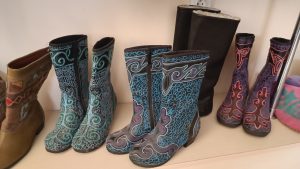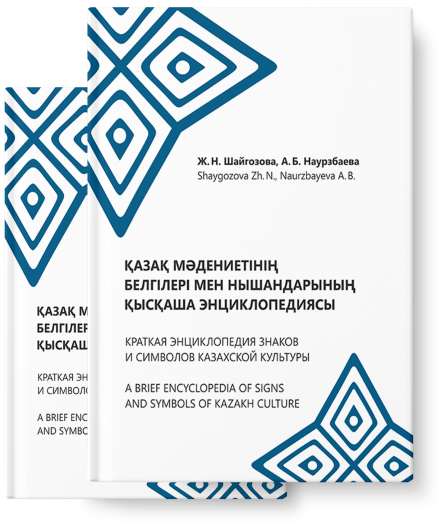
A short encyclopedia of
Signs and symbols of
Kazakh culture

A special place in traditional culture was occupied by footwear, which among the Kazakhs, as among many other peoples of Central Asia, included high-heeled shoes without a boot heel, soft boots, high-heeled boots and other types. Shoes in traditional culture are associated with the earthly origin, under which is the underworld – the realm of the dead, evil or demonic beings, that is, shoes represent a sacred ground. Therefore, according to experts, the decoration of traditional Kazakh shoes “kebis”, “mäsi” and “saptama etik” consists of ornaments of flora and fauna, that is, the middle world, which practically cover the entire surface of the shoe. Colour also played a role: the light palette was characteristic of wedding shoes, the sad one corresponded to the shoes of the elderly. The ornamental decoration of the shoes reflected the ideas of goodwill towards the owner, amulet and protection from evil forces of the underworld.
According to the nomads, a spout bent upwards had not only a utilitarian function – good grip when riding – but also a way not to “disturb” the earth – Zher-Ana. Shoes symbolise the way, the journey, the movement: boots/shoes are a “common” element of wall paintings in traditional mausoleums, where they most likely symbolise a person’s journey to the realm of the dead. At the same time, footwear was involved in some rites and divinations of the life cycle.
Sacralization of footwear is characteristic for many cultures. For example, Ukrainian red boots were a symbol of fertility and fertilisation and an invariable attribute of the wedding ritual; in Chinese culture there was a custom of exchanging shoes between newlyweds, symbolising the vow of a long life together.

